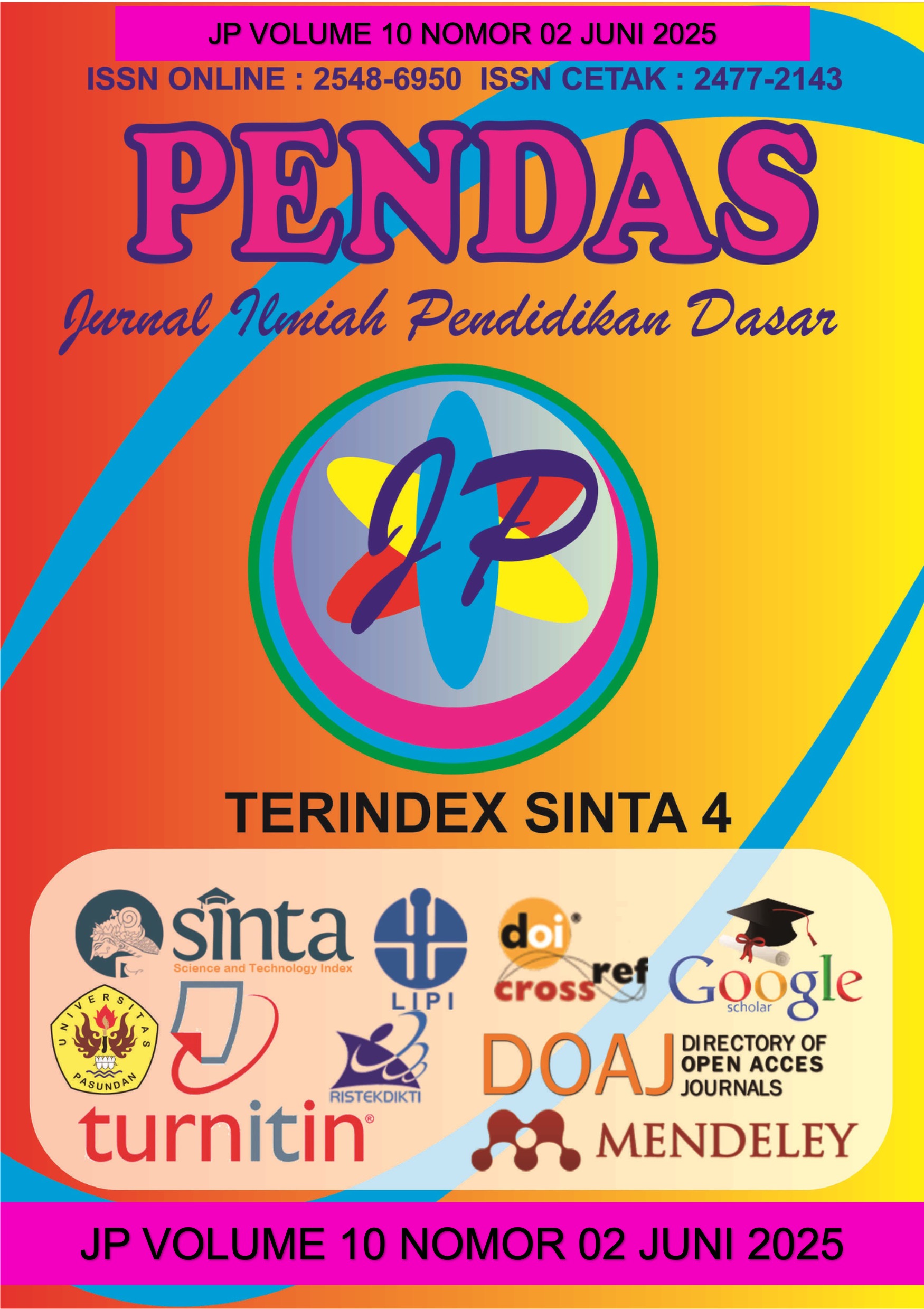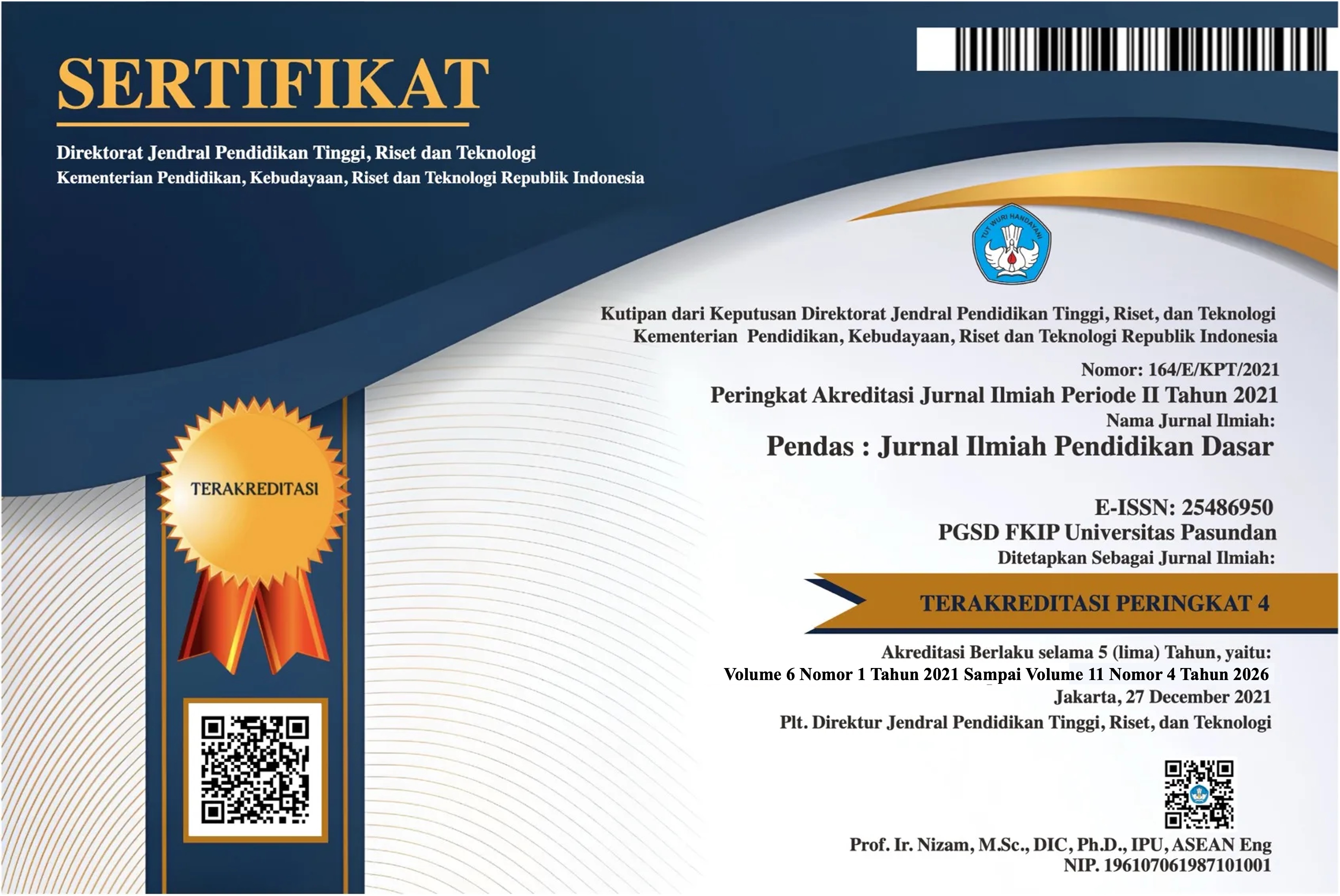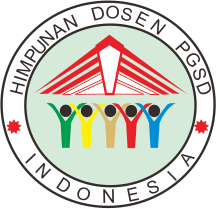PENGARUH TEKNIK PEMBELAJARAN SCAFFOLDING TERHADAP KEMAMPUAN MENULIS ARTIKEL ILMIAH POPULER SISWA KELAS XII SMA NEGERI 1 RUNDENG TAHUN PEMBELAJARAN 2024-2025
DOI:
https://doi.org/10.23969/jp.v10i02.23913Keywords:
scaffolding, artikel ilmiah populer, quasi eksperimen, SMA Negeri 1 RundengAbstract
This research on the ability to write popular scientific articles aims to explain the influence of learning techniques scaffolding on the ability to write popular scientific articles of Class This research used a Quasi Experimental method involving two groups (two group), namely the experimental class and the control class. The data collection technique uses a test technique in the form of an assignment to write Popular Scientific Articles. Non-test data collection techniques include interviews, observation and obtaining documentation. Hypothesis testing was carried out using the t-test via the IBM SPSS version 25 application. The results of the research showed that learning to write popular scientific article texts using the technique scaffolding that the lowest score in the experimental class was 73 and the highest score was 95 with an average score of 86. The results found that in the experimental class, students were able to write scientific articles well based on the three assessment indicators. The most prominent thing is that students have high scores in the structure adjustment section of popular scientific articles. It is known that the Sig value. (2-tailed) is 0.00 < 0.05. Apart from that, based on the assumptions of the t test, it is obtained that the t count is more basic than the t table with α = 0.05 degrees of freedom (dk/df) = n1 + n2 – 2 = 23 + 22 – 2 = 43. By comparing the t count and t table, 10.231 > 1.681 (t count > t table). On that basis, the hypothesis is accepted is Ha with the hypothesis sounding "There is a significant influence of technique Scaffolding compared to lecture techniques in writing popular scientific articles for Class XII SMA Negeri 1 Rundeng Kota Subulussalam in the year 2024-2025 academic year.
Downloads
References
Amaliah, R. R., Fadhil, A., & Narulita, S. (2014). Penerapan metode ceramah dan diskusi dalam meningkatkan hasil belajar PAI di SMA Negeri 44 Jakarta. Jurnal Studi Al-Qur'an, 10(2), 119-131.
Aryanti. (2020). Inovasi Pembelajaran Matematika di SD. Yogyakarta: Deepublish.
Ayu, F., Anggriani, D., & Nizamuddin, N. (2023). Meningkatkan Kemampuan Menulis Karya Ilmiah Melalui “Process Approach” pada Siswa/i SMA Panca Budi. ENGGANG: Jurnal Pendidikan, Bahasa, Sastra, Seni, dan Budaya, 3(2), 21-33.
Dafittra, F., & Putri, A. H. (2023). Pengaruh Teknik Scaffolding Berbasis Media Inovatif dalam Pembelajaran Menulis Struktur Tesis Teks Eksposisi Profetik. Jurnal Pembelajaran Bahasa dan Sastra, 2(5), 667-674.
Dewi, N. P. E. F., Martha, I. N., & Wendra, I. W. (2016). Kesulitan Belajar Keterampilan Menulis Cerita Pendek Siswa Kelas IXC SMP Negeri 3 Singaraja Tahun Pelajaran 2016/2017. Jurnal Pendidikan Bahasa dan Sastra Indonesia Undiksha, 5(3).
Ernawati, M.,Damris, Asrial, & Muhaimi. (2020). Model Pembelajaran Berbasis Masalah dengan Scaffolding untuk Meningkatkan Keterampilan Berpikir Kreatif Mahasiswa pada Mata Kuliah Biokimia I. Jambi: Komunitas Gemulun Indonesia.
Imanudin, J. (2024). Pengaruh Instructional Scaffolding Terhadap Kemampuan Menulis Teks Deskriptif. Jurnal Fakultas Keguruan & Ilmu Pendidikan Kuningan, 5(1), 48-53.
Ks, S., Bambang, W. R., & Sugiyarti, I. (2016). Peningkatan Kemampuan Menulis Artikel Ilmiah Populer Siswa Kelas Ix Smp Negeri I Bringin Dengan Pembelajaran Saintifik Berbasis Media Massa. Lensa: Kajian Kebahasaan, Kesusastraan, dan Budaya, 6(2), 118-141.
Kusmiarti, R., Rusmawati, A., Heryanti, J., & Eloudia, R. (2023). Kemampuan Menulis Teks Eksposisi Siswa Kelas VIII SMP. Jurnal KIBASP (Kajian Bahasa, Sastra dan Pengajaran), 7(1), 48-64.
Majid, Abdul. (2017). Strategi Pembelajaran. Bandung: PT Remaja Rosdakarya. Moleong, Lexy J. (2021). Metodologi Penelitian Kualitatif. Bandung: Remaja Rosdakarya.
Nurjamilah, A. S., & Suharyan, I. (2023). Analisis Struktur dan Unsur Kebahasaan Artikel Ilmiah Populer dalam Rubrik Opini Sindonews Edisi Tahun 2021 sebagai Alternatif Bahan Ajar Artikel Ilmiah Populer di Kelas Xii. PRIMER: Jurnal Ilmiah Multidisiplin, 1(2), 179-189.
Pitrianti, S., & Gasanti, R. (2020). Analisis Kesulitan Menulis Karya Ilmiah Siswa SMA Terbuka. Literasi: Jurnal Bahasa dan Sastra Indonesia serta Pembelajarannya, 4(2), 91-96.
Rahim, A. R. (2020). Cara Praktis Penulisan Karya Ilmiah. Yogyakarta: Zahir publishing.
Siregar, H., & Barus, F. L. (2023). Pengaruh Model Pembelajaran Scaffolding Terhadap Kemampuan Menulis Resensi Buku pada Siswa Kelas XI SMA Negeri 6 Medan. Metafora: Jurnal Pembelajaran Bahasa Dan Sastra, 10(2), 93-99.
Susanti, S., Aminah, F., Assa'idah, I. M., Aulia, M. W., & Angelika, T. (2024). Dampak Negatif Metode Pengajaran Monoton Terhadap Motivasi Belajar Siswa. Pedagogik: Jurnal Pendidikan dan Riset, 2(2), 86-93.
Susilowati, T., & Rahmadhani, A. (2023, December). Membangun Metakognitif dalam Menulis Menggunakan Teknik Scaffolding. In Seminar Nasional Literasi Prodi PBSI FPBS UPGRIS (pp. 318-325).
Tambak, S. (2014). Metode ceramah: Konsep dan aplikasi dalam pembelajaran Pendidikan Agama Islam. Jurnal Tarbiyah, 21(2).
Widayoko, Agus. (2020). Menulis Artikel Ilmiah dan Esai. Bandung: Yrama Widya.
Widodo, Sigit Bambang. (2021). Metode Penelitian Pendidikan; Pendekatan Sistematis & Komprehensif. Yogyakarta: Eiga Media.
Yanti, F. A., Mundilarto, M. P., & Kuswanto, H. (2019). Teori Dan Aplikasi Model Cooperative Research Project Based Learning di Perguruan Tinggi. Gre Publishing.
Downloads
Published
Issue
Section
License
Copyright (c) 2025 Pendas : Jurnal Ilmiah Pendidikan Dasar

This work is licensed under a Creative Commons Attribution 4.0 International License.



















